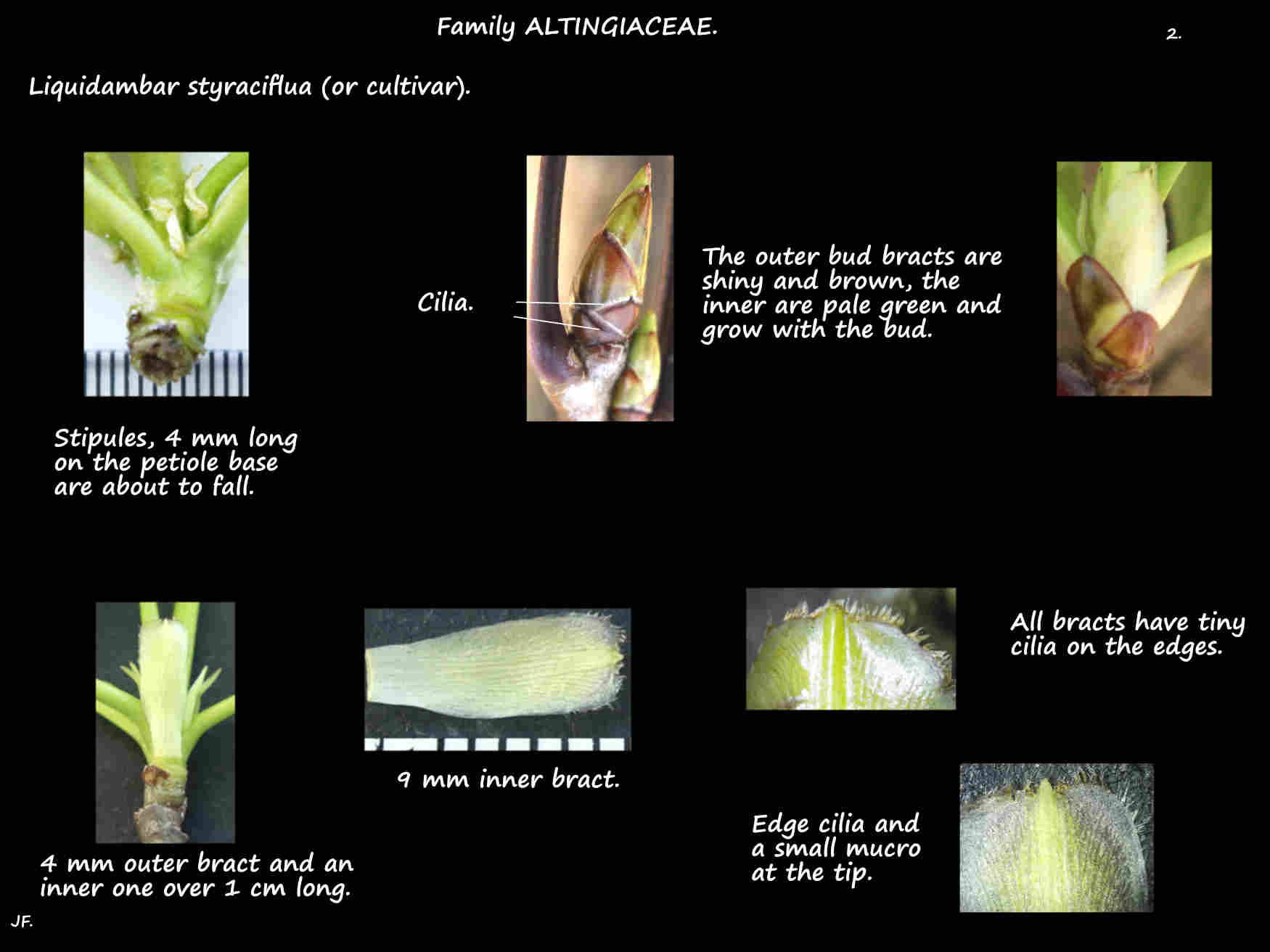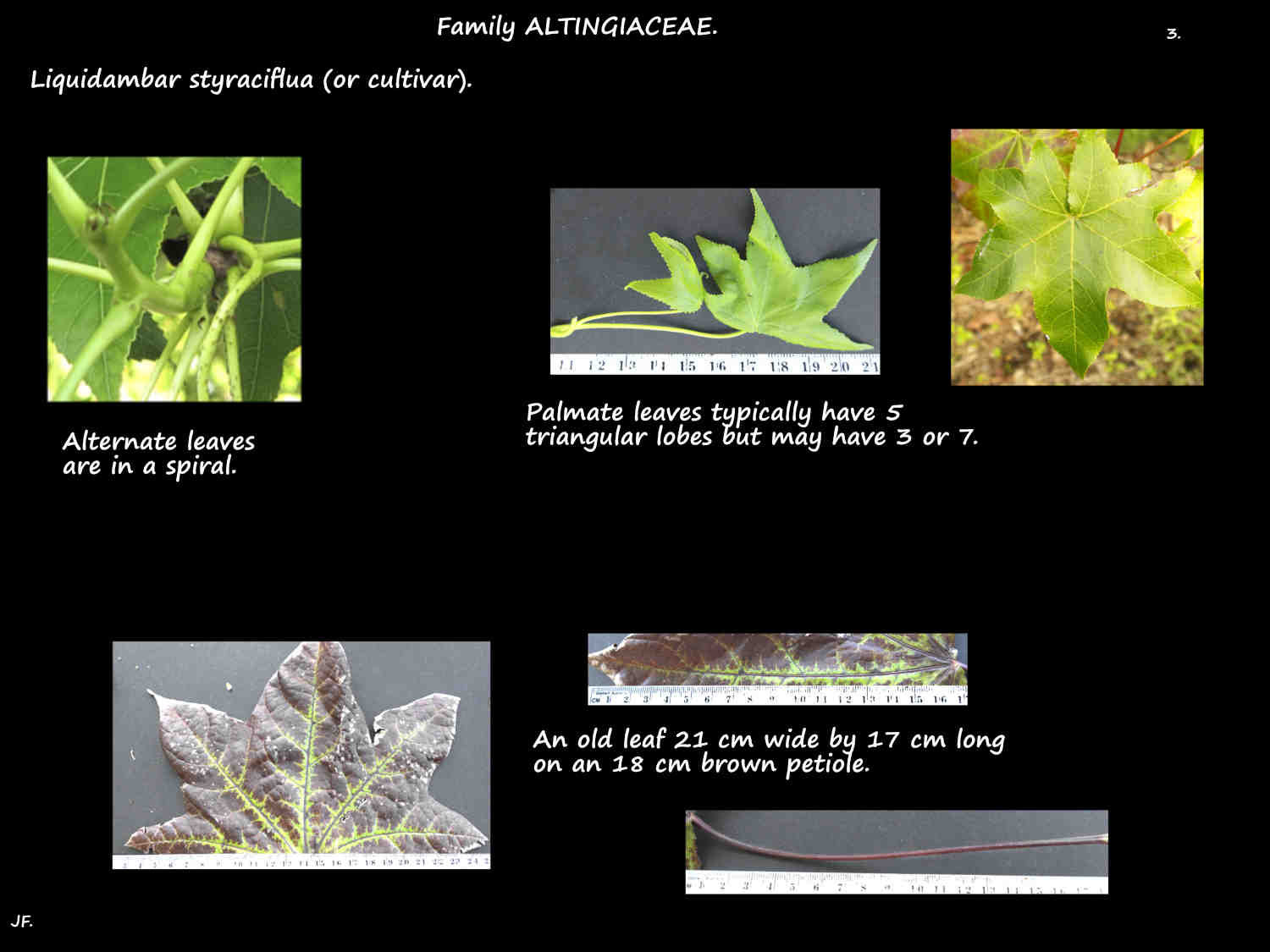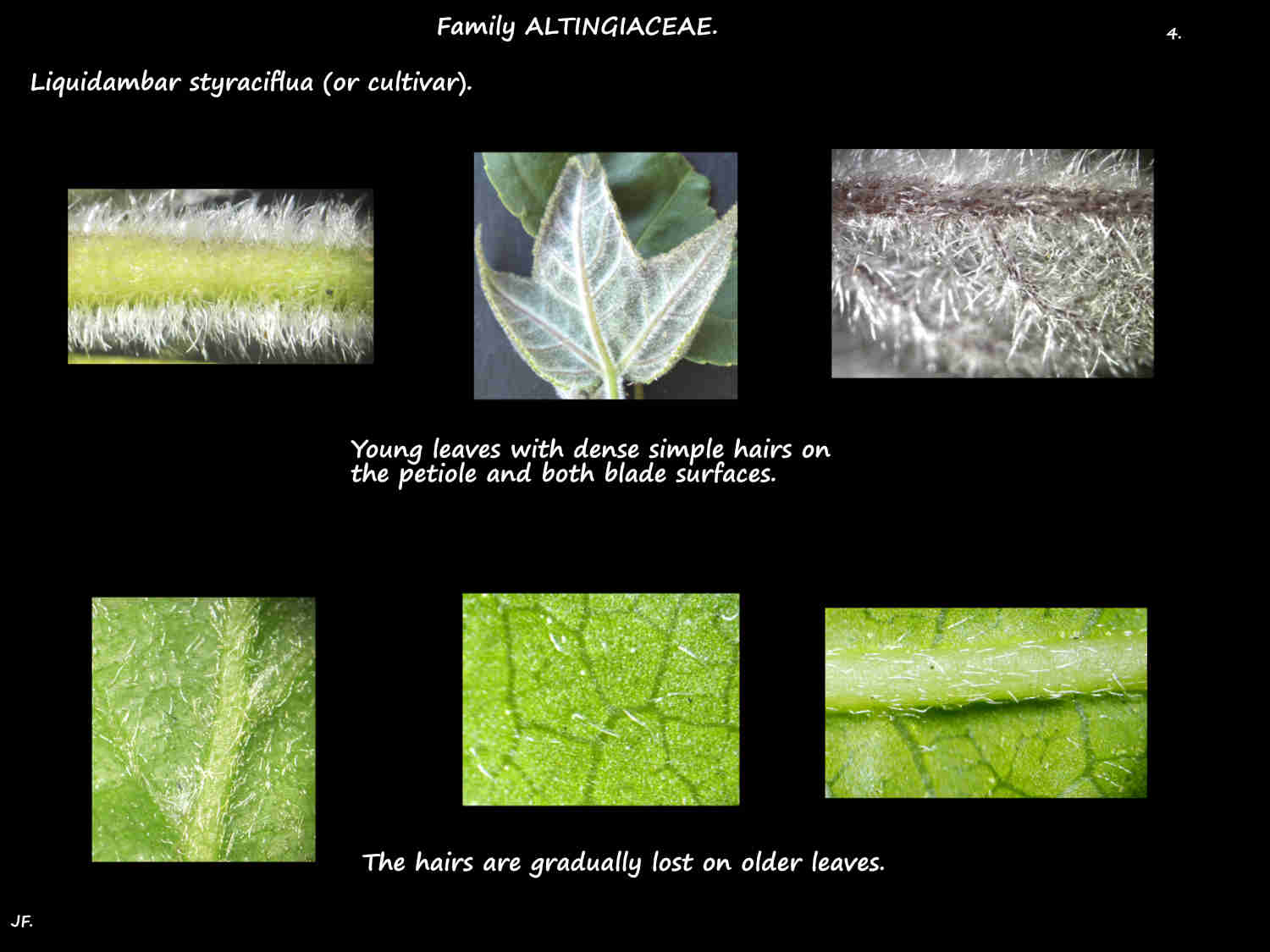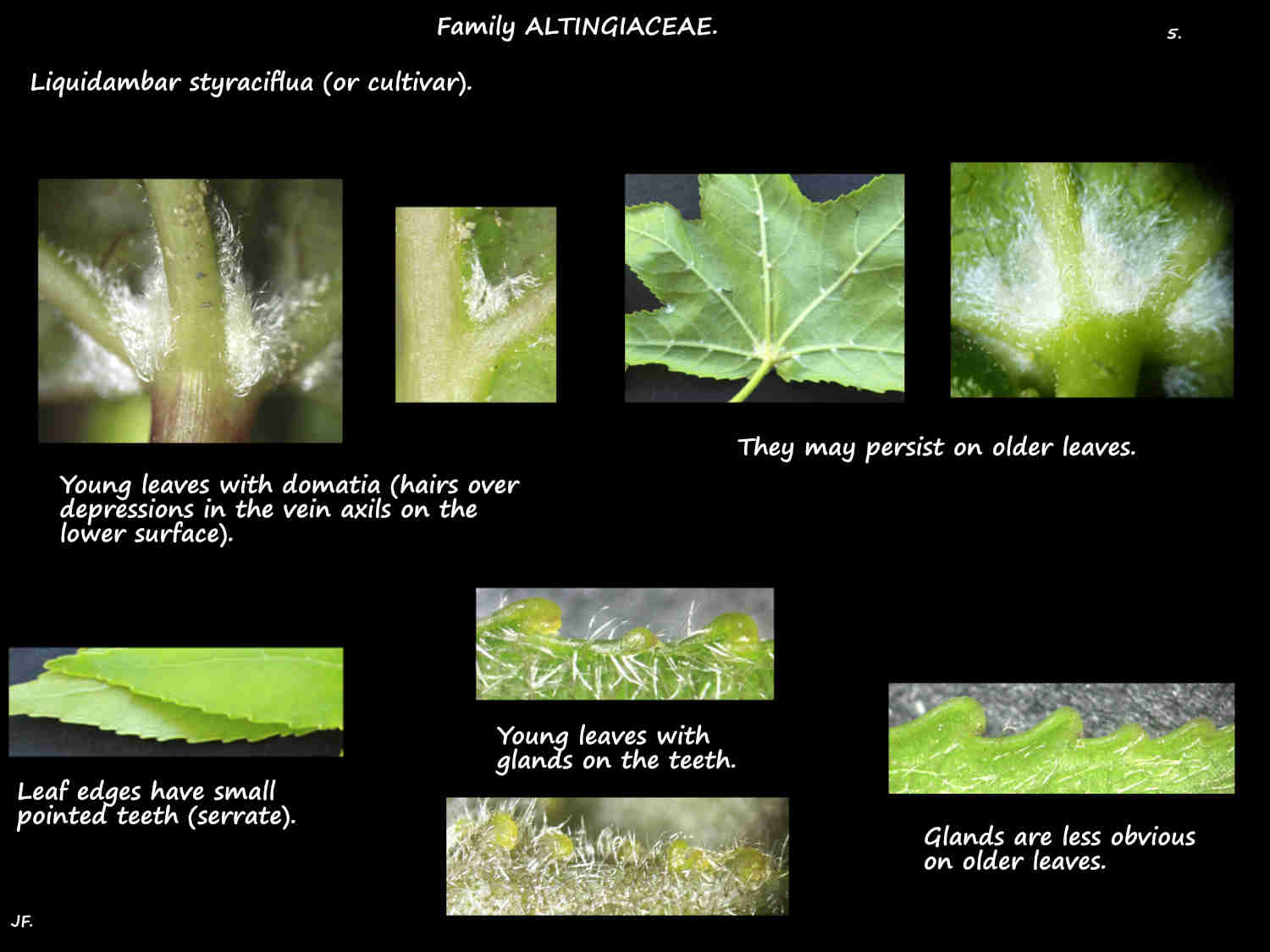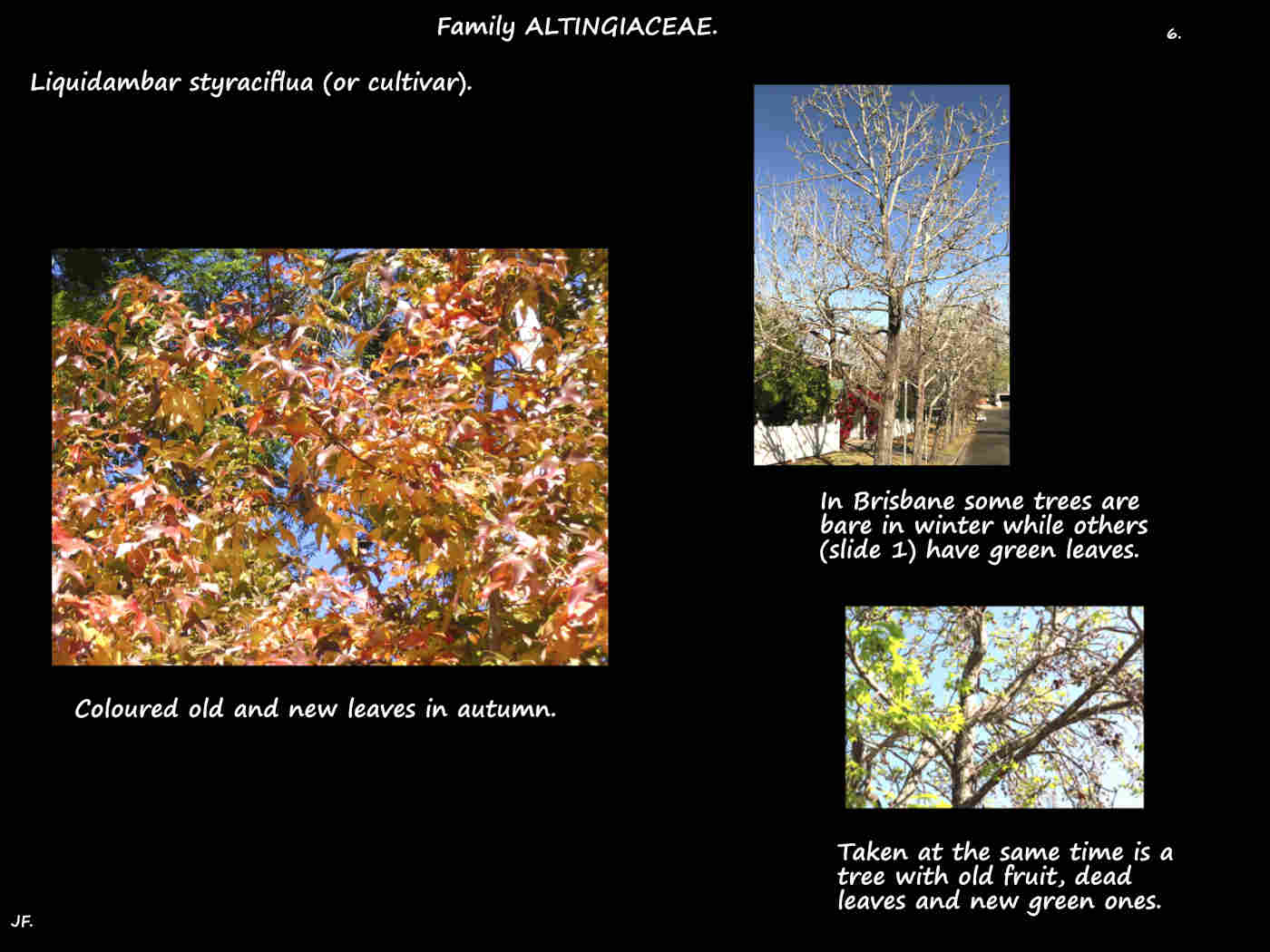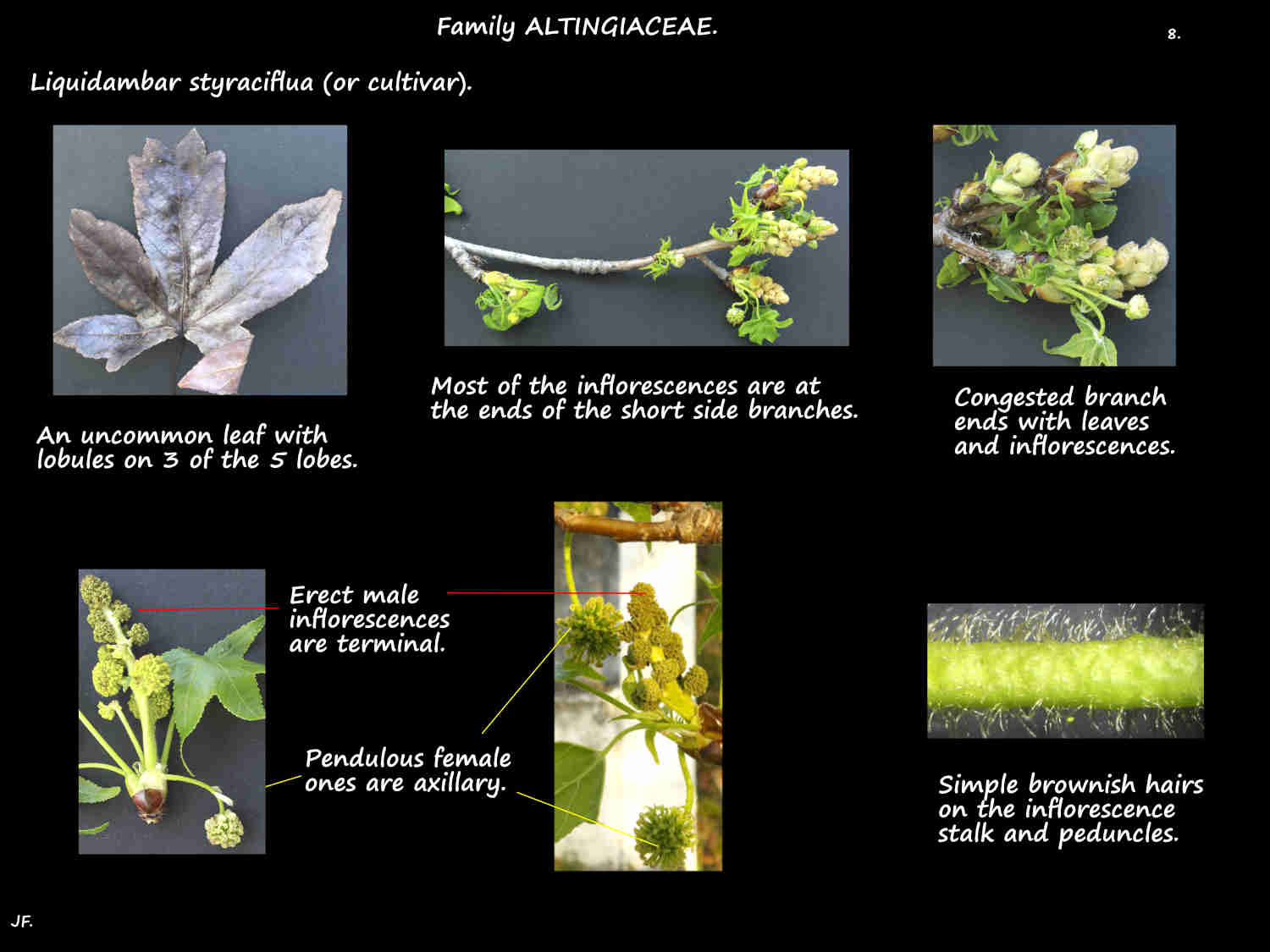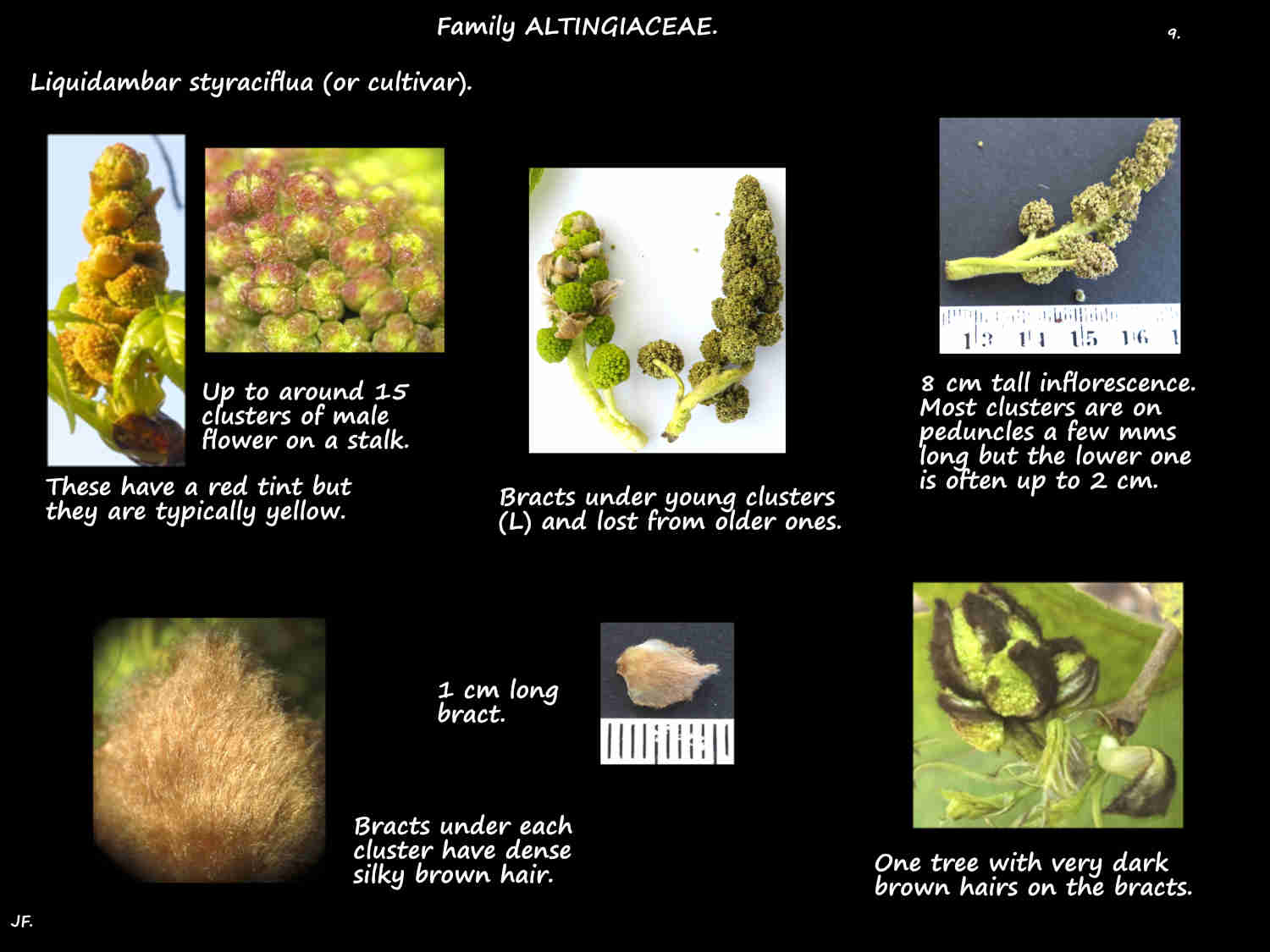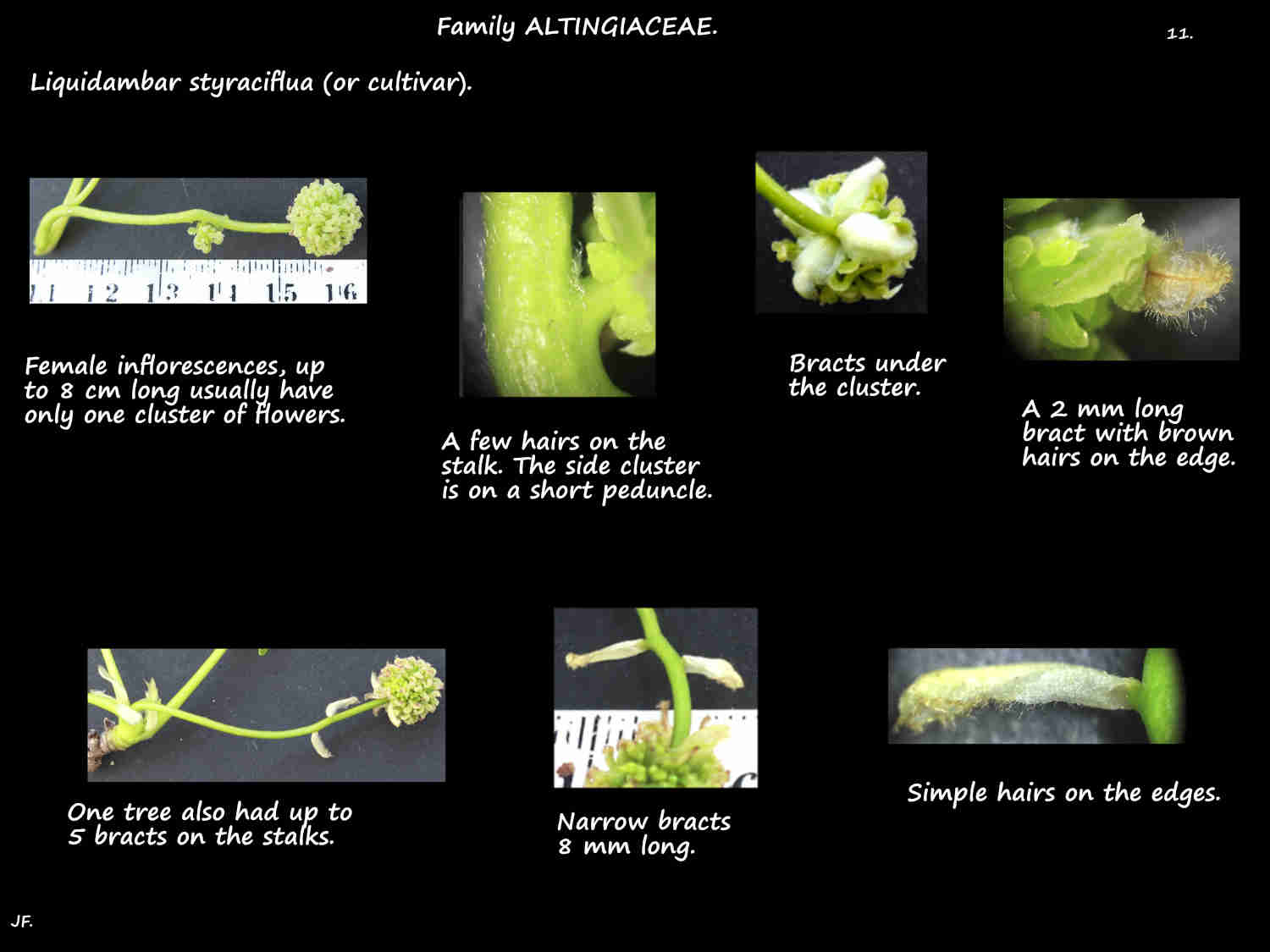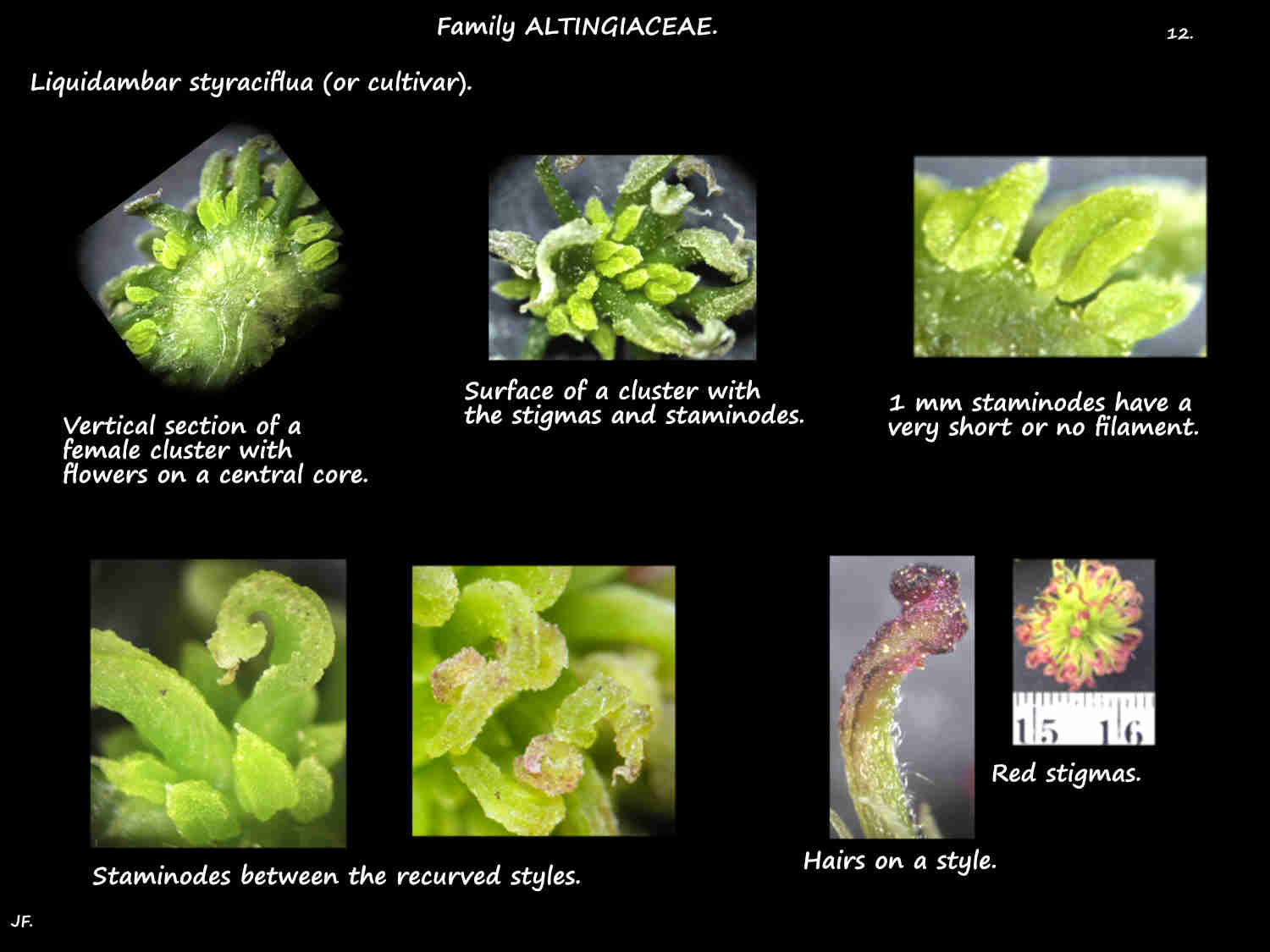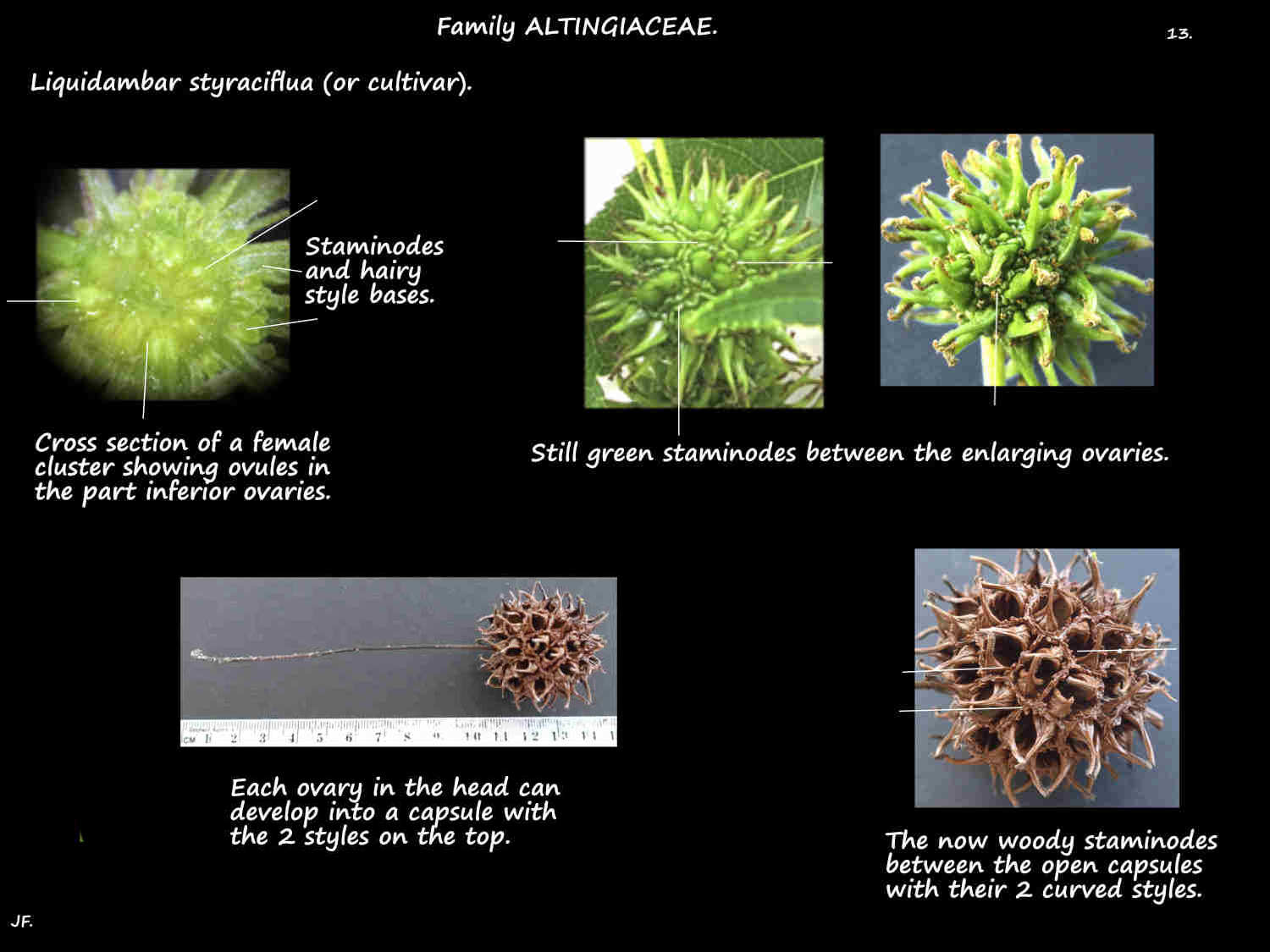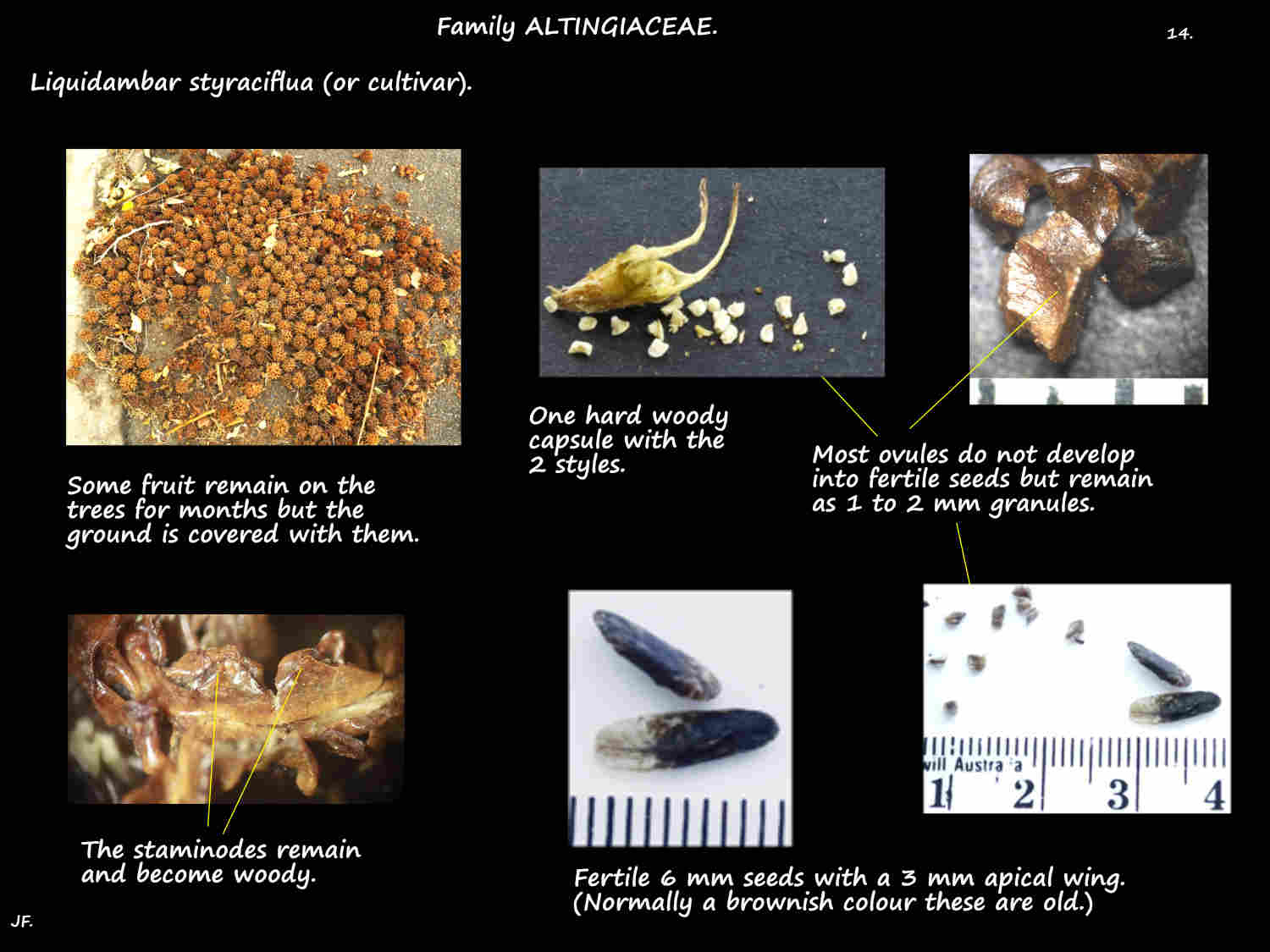Liquidambar styraciflua.
Sweetgums, native to North America are commonly cultivated as street trees and in parks.
They are medium to large mostly deciduous trees with a single straight trunk.
From 10 to 25 m high in cultivation they can be up to 45 or 50 m.
Young trees are pyramid-shaped and older ones have a rounded crown.
Bark on the trunk is light reddish-brown or grey and deeply fissured.
Twigs, often with a layer of cork on them may have ridges or wings.
Brown winter buds on the ends of small leafless branches are up to 1.5 cm long.
They are covered by layers of bracts with the outer ones being around 6 mm long while the inner ones grow with the bud.
The outer are a shiny dark brown and the inner pale green with a reddish top. There are tiny hairs (cilia) on the edge.
The leaves, alternately arranged in a spiral are on a green then brown petiole up to around 10 cm long.
There are simple hairs around the base of the petiole.
There are 2 narrow stipules attached to the base of the petiole.
Palmate (hand-like) leaf blades are up to around 10 cm long and 16 cm wide.
The base is flat or slightly heart-shaped and there are 5 (3 or 7) triangular lobes.
The pointed lobes have small glandular teeth on the edge and they ocasionally have lobules (small lobes).
Young leaves are densely covered in simple hairs but these are gradually lost.
Mature leaves are bright green above and paler underneath.
The lower surface may have simple hairs over small depressions in the vein axils (domatia).
Trees are typically deciduous and leaves become bright red, orange, yellow, burgundy or dark brown before they fall.
In some climates the green leaves may remain on the tree over winter.
(The similar autumn coloured Acer (maple) leaves are arranged in opposite pairs.)
Inflorescences are a stalk with one or more clusters of greenish male or female flowers.
Each tree has male and female inflorescences in it.
Each cluster is on a stalk or peduncle up to 1 or 2 cm long.
There are simple hairs on the stalk and peduncles and on the small bracts under each cluster.
Erect terminal male inflorescences, up to 6 cm long have a few dense clusters of flowers.
Male or staminate flowers have no sepals or petals but there are tiny hairy bracts at their base.
Each flower has 4 to 8 stamens on short filaments.
The anthers open inwards and fall after the pollen has been released.
Pendulous female inflorescences, up to 8 cm long are in the near terminal leaf axils.
They typically only have one cluster of flowers.
The pistillate flowers have no sepals or petals but 4-8 very small fleshy lobes that are sterile stamens (staminodes).
The part inferior ovary of 2 carpels has 2 (1) locules and 2 styles that curve down.
There are many ovules but few mature into seeds.
The hard woody spherical fruiting heads, up to 4 cm across can have around 50 capsules on a central core.
Most capsules, with the 2 persistent styles have granular undeveloped seeds.
A few will have 1 or 2 fertile seeds that are released through an apical opening.
Heads remain on the tree for a long time.
Thick mature seeds, around 8 mm long have an apical wing.
There are up to 20 cultivars including plants only 1 or 2 m high, narrow columnar forms, variegated leaves, leaves with blunt lobes and many in various colours from yellow to red, burgundy, pink and purple.
J.F.

